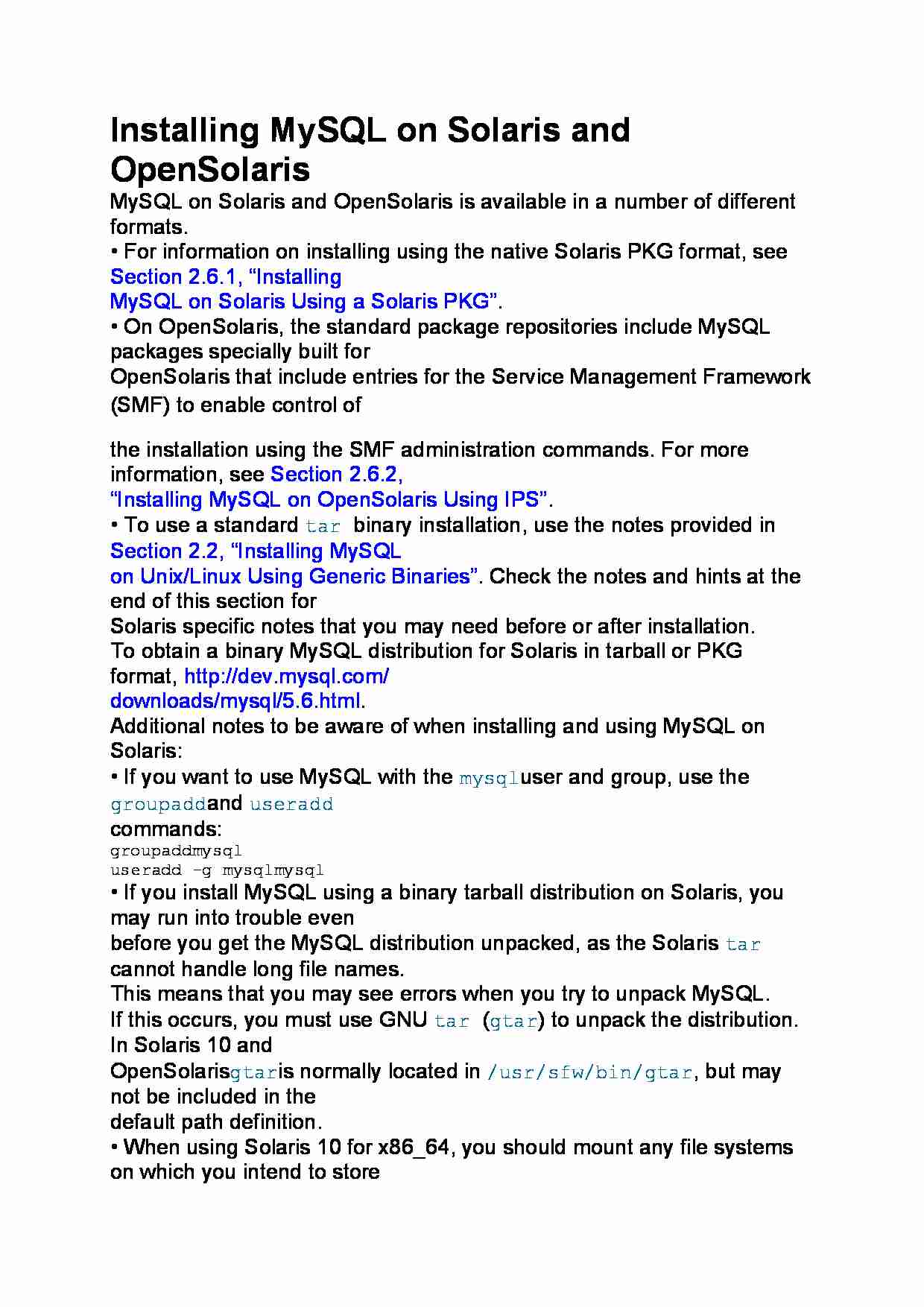To tylko jedna z 2 stron tej notatki. Zaloguj się aby zobaczyć ten dokument.
Zobacz
całą notatkę


Installing MySQL on Solaris and OpenSolaris
MySQL on Solaris and OpenSolaris is available in a number of different formats.
• For information on installing using the native Solaris PKG format, see Section 2.6.1, “Installing
MySQL on Solaris Using a Solaris PKG”.
• On OpenSolaris, the standard package repositories include MySQL packages specially built for
OpenSolaris that include entries for the Service Management Framework (SMF) to enable control of
the installation using the SMF administration commands. For more information, see Section 2.6.2,
“Installing MySQL on OpenSolaris Using IPS”.
• To use a standard tar binary installation, use the notes provided in Section 2.2, “Installing MySQL
on Unix/Linux Using Generic Binaries”. Check the notes and hints at the end of this section for
Solaris specific notes that you may need before or after installation.
To obtain a binary MySQL distribution for Solaris in tarball or PKG format, http://dev.mysql.com/
downloads/mysql/5.6.html.
Additional notes to be aware of when installing and using MySQL on Solaris:
• If you want to use MySQL with the mysql user and group, use the groupadd and useradd
commands:
groupadd mysql
useradd -g mysql mysql
• If you install MySQL using a binary tarball distribution on Solaris, you may run into trouble even
before you get the MySQL distribution unpacked, as the Solaris tar cannot handle long file names.
This means that you may see errors when you try to unpack MySQL.
If this occurs, you must use GNU tar (gtar) to unpack the distribution. In Solaris 10 and
OpenSolaris gtar is normally located in /usr/sfw/bin/gtar, but may not be included in the
default path definition.
• When using Solaris 10 for x86_64, you should mount any file systems on which you intend to store
InnoDB files with the forcedirectio option. (By default mounting is done without this option.)
Failing to do so will cause a significant drop in performance when using the InnoDB storage engine
on this platform.
• If you would like MySQL to start automatically, you can copy support-files/mysql.server to /
etc/init.d and create a symbolic link to it named /etc/rc3.d/S99mysql.server.
• If too many processes try to connect very rapidly to mysqld, you should see this error in the MySQL
log:
Error in accept: Protocol error
You might try starting the server with the --back_log=50 [480] option as a workaround for this.
• To configure the generation of core files on Solaris you should use the coreadm command. Because
of the security implications of generating a core on a
... zobacz całą notatkę




Komentarze użytkowników (0)